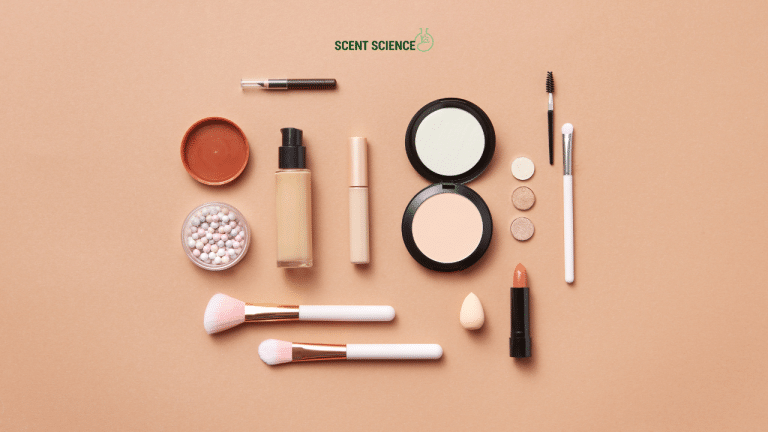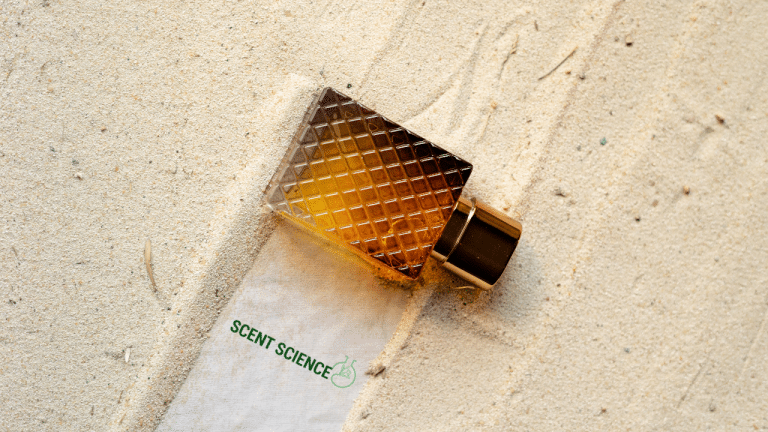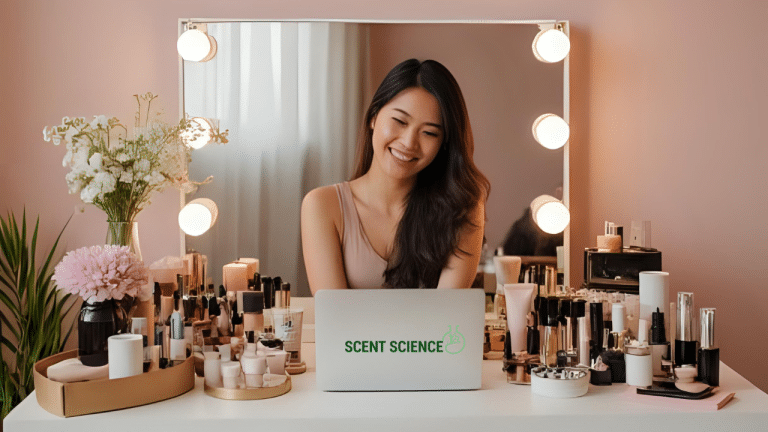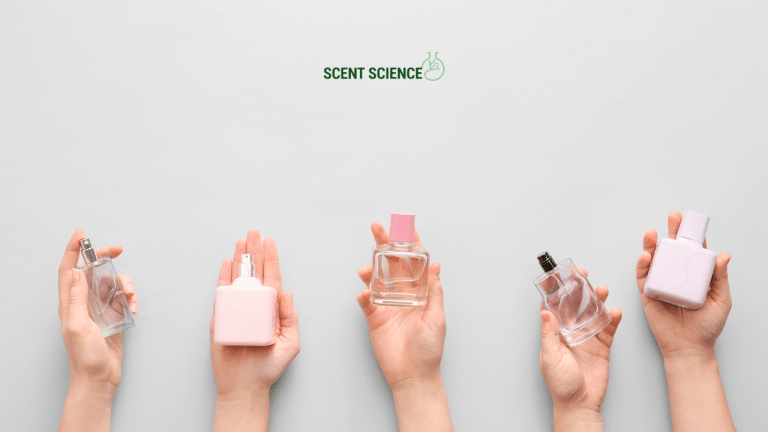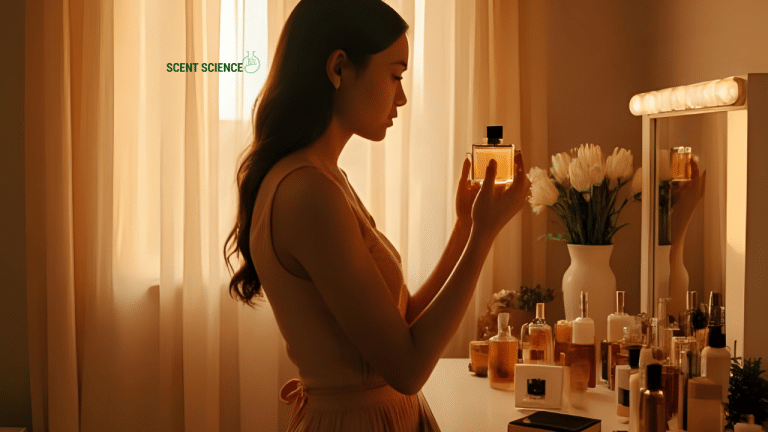The world of fragrance is an enchanting blend of art and science—a complex interplay between nature’s aromatic offerings and the intricate chemistry behind scent creation. 🧪 Creating a perfume is a meticulous journey from selecting plants to crafting the final fragrance, designed to spark emotions and memorable experiences. Ever wondered how a delicate floral whisper transforms into a heady, lingering scent on your skin? Welcome to this expertly curated educational guide on the scientific process of fragrance creation, where we’ll peel back the layers of this captivating art form.
Table of Contents
ToggleUnderstanding the Basics: The Essence of Plants
The magic of perfume creation begins at the source: plants. Botanicals provide an astonishing variety of aromatic compounds, each contributing unique olfactory notes. Essential oils, absolutes, and concretes are key extracts obtained from plants, forming the building blocks of perfumes. 🌿 Mother Nature offers a catalog ranging from exuberant florals to warm, woody notes. Understanding these natural essences is the first step in mastering the perfume making process.
Aromatic Sources: Nature’s Diversity
When we talk about aromatic sources, think of flowers like roses and jasmine, spices such as cinnamon and cloves, woody ingredients like sandalwood and cedar, and even the crisp, green scent of freshly cut grass. The diversity found in nature lays the foundation for an extensive palette to craft your aromatic narratives.
Key Plant Oils in Fragrance Making:
- Rose Oil: Provides floral, sweet, and slightly citrusy notes. Rose Oil is pivotal in crafting romantic, elegant fragrances.
- Sandalwood: Offers a warm, woody base often used to provide longevity and a creamy, rich scent profile.
- Vetiver: Known for its earthy, smoky, and slightly sweet aromas, enhancing woody and green formulations.
The Science of Extraction: Capturing Plant Essence
Common Extraction Techniques: Unlocking Naturals

- Distillation: A time-tested process, distillation utilizes steam to separate plant’s essential oils from water, capitalizing on their aromatic compounds. Industry standards like ISO 9235 ensure consistency and purity in distilled oils.
- Cold Pressing: Often used for citrus oils, this mechanical method avoids heat, preserving the more delicate, volatile components of citrus peels.
- Solvent Extraction: Involving the use of chemical solvents, this technique helps in acquiring absolutes from botanicals that do not respond well to steam. It’s ideal for fragile flowers like jasmine.
- CO2 Extraction: This modern method employs supercritical carbon dioxide, allowing a cleaner extraction with reduced thermal degradation, becoming a preferred technique for purists seeking purity.
Real-World Application: Achieving Maximum Yield
The efficiency of these methods defines the cost and quality of the resulting product. For example, sandalwood trees’ heartwood undergoes steam distillation because their oils impart desirable robust, creamy wood notes.
Actionable Tip:
To ensure high-quality extraction, always source materials from suppliers adhering to established Good Manufacturing Practices (GMP). Certificates of Analysis (COA) validate quality and purity, reinforcing product integrity.
The Art of Formulation: Crafting Harmony
The term ‘formulation’ refers to the strategic blending of various aromatic compounds to create a harmonious perfume. The craftsmanship in formulation distinguishes a novice fragrance from one hailed by industry connoisseurs. The creativity in the combination of top, middle, and base notes culminates in the signature scent.
Fragrance Structure: The Olfactory Pyramid
The traditional perfume structure is modeled on an olfactory pyramid, demarcating the progression of a fragrance:

- Top Notes: Refreshing and volatile, evoking an immediate first impression. Common top notes include citrus and light herbal notes.
- Middle Notes (or Heart Notes): Revealed once top notes dissipate, these form the scent’s main body. Floral, fruity, or spicy elements often populate this layer.
- Base Notes: Rich and long-lasting, base notes anchor the scent with depth, featuring earthy and woody components.
Case Study: Crafting a Classic
Consider “Chanel No. 5,” designed by Ernest Beaux in 1921, which revolutionized the world of perfumes through its use of aldehydes along with traditional florals, showcasing not only groundbreaking composition but enduring allure.
Real-World Application:
Professionals often employ Gas Chromatography-Mass Spectrometry (GC-MS) for precision in formulation. This tool separates, identifies, and quantifies complex mixtures, assuring the desired balance without over-dominance of particular notes.
Expert Insights: Balancing Innovation and Tradition
Many perfumers respect traditional structures while also experimenting with new scent phenomena. Niche perfumery often breaks the olfactory mould with notes like gunpowder and tar—innovations fostering evolution in modern fragrance narratives.
Quality Control and Testing: Ensuring Perfection
Perfume Stability: Testing for Every Factor
Quality control in perfumery assures the longevity and safety of the product. Across the development cycle, several tests are conducted:
- Thermal Tests: Ensuring the perfume retains integrity under temperature fluctuations.
- Light Stability: Examining changes in fragrance under UV and fluorescent lighting.
- Skin Sensitization: Complying with dermatological safety through patch tests.
Role of IFRA Standards

The International Fragrance Association (IFRA) sets regulations ensuring safety and sustainability in perfume formulations, preventing excessive use of harmful constituents. Their guidelines reflect on labeling, disclosure of allergens, and limitations of specific compounds. Adhering to these standards elevates not only the safety but also the ethical standing of the perfume.
Final Steps: From Lab to Market
With the balanced formulation derived from carefully extracted ingredients, the final masterpiece is set for packaging and marketing. Sustainability in packaging has gained significant traction as brands strive to commit to environmentally conscious practices.
Market Positioning and Consumer Engagement
Educated consumers today value transparency about a product’s development. Sharing the story, from source plant to perfume, through authentic narratives and labeling, enriches your brand story.
Real-World Example: Ethical Branding
The fragrance brand “Le Labo” emphasizes personalization with hand-labelled bottles and highlights a commitment to vegan, cruelty-free ingredients, which resonates well in the ethically aware consumer market.
Conclusion: The Perennial Allure of Perfume
In the fascinating journey from plant to perfume, every process, from extraction to formulation and final quality assurance, reveals the meticulous artistry merging with scientific innovation. 🤝 It is this delicate yet powerful combination that crafts perfumes worthy of both personal collection and perennial admiration. Whether you are nurturing a passion for scent creation or simply delight in the fragrances around you, embracing these thorough insights into the perfume making process enables a deeper appreciation for the fragrances that captivate our senses every day.
With this comprehensive scientific breakdown, you are now equipped not only with foundational knowledge but also industry insights and tips to engage further in the aroma-laden odyssey of perfume creation. 🌟
Frequently Asked Questions
What are the benefits of using a hair mask in my hair care routine?
Using a hair mask can provide several benefits, including hydration, smoothing, strengthening, curl definition, heat protection, and damage repair. Hair masks infuse the hair with moisture, help coat the hair shaft to seal split ends, reduce breakage, and protect the hair from heat styling and environmental damage[1][4].
What ingredients should I look for in a hair mask?
Effective hair masks often include ingredients such as coconut oil, argan oil, shea butter, honey, avocado oil, green tea, and coconut water. These ingredients provide nourishment, moisturize, and protect the hair, offering benefits like softening, moisturizing, and protecting against damage[2][5].
How often should I use a hair mask in my routine?
You should use a hair mask whenever your hair feels dry, unmanageable, or in need of intense hydration. This can vary depending on your hair type and needs, but generally, using a hair mask once or twice a week can help maintain healthy and moisturized hair[1][4].
How do I apply a hair mask for the best results?
To apply a hair mask effectively, shampoo your hair first, then apply the mask, focusing especially on the ends where hair tends to be the most damaged. Leave the mask on for anywhere from 10 minutes to overnight, depending on the type of mask and your hair’s needs[1][4].
References


